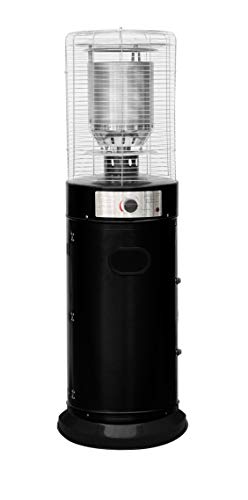7 Secrets About Patio Heating That Nobody Will Tell You
Buying Gas Radiant Heaters: A Comprehensive Guide
Gas radiant heaters have acquired appeal over the last few years for their performance and capability to provide instantaneous warmth. As more homeowners and organizations search for ways to keep their spaces comfortable, understanding the functions, benefits, and factors to consider when buying these heating systems can be extremely useful. This post looks into the complexities of gas radiant heaters, assisting potential purchasers in making informed choices.
What are Gas Radiant Heaters?
Gas radiant heaters are devices that use propane or natural gas to produce heat straight into a space. Rather than heating the air, they warm things and people in their area, providing convenience quicker and efficiently. These heaters are popular for both indoor and outdoor settings due to their adaptability and efficiency.
Key Features of Gas Radiant Heaters
- Direct Heating: Unlike standard heaters that warm the air, gas radiant heaters offer direct warmth, making them an efficient choice for rapidly heating up areas.
- Portability: Many designs are readily available as portable units, permitting them to be easily moved from one area to another.
- Fuel Variety: Gas radiant heaters can be powered by natural gas or propane, offering users versatility based on schedule and choice.
- Adjustable Settings: Most gas radiant heaters included adjustable heat settings, permitting users to customize the level of warmth based on their requirements.
Benefits of Gas Radiant Heaters
- Energy Efficiency: These heaters transform gas into heat effectively, resulting in lower utility bills compared to electric heaters.
- Quick Heating: Radiant heat is felt practically immediately, making these heaters perfect for sudden temperature level drops.
- Low Maintenance: Gas radiant heaters normally require less maintenance than electrical designs, making them a problem-free alternative.
- Eco-friendly: When powered by clean natural gas, these heaters can be a more ecologically sustainable option compared to other heating techniques.
Types of Gas Radiant Heaters
When it concerns selecting a gas radiant heater, it's vital to comprehend the various types available. Below are the most typical options:
- Indoor Gas Radiant Heaters: Designed for indoor spaces, these heaters are normally vented or unvented and often included built-in security features.
- Outdoor Gas Radiant Heaters: Commonly utilized in patios or outdoor dining locations, these heaters are developed to endure the components.
- Wall-Mounted Gas Radiant Heaters: A space-saving option, these systems are ideal for smaller spaces and can be equipped with different heat outputs depending on the area's needs.
- Freestanding Gas Radiant Heaters: These portable models can be used in different areas, ideal for those who require versatility.
Buying Guide: How to Choose the Right Gas Radiant Heater
When purchasing a gas radiant heater, several aspects must be thought about to ensure you pick the ideal design for your space:
1. Heating Capacity
- Determined in BTUs (British Thermal Units), the heater's capability identifies just how much location it can effectively warm. Buyers need to evaluate their particular requirements based upon space size.
Space Size (sq feet)
Recommended BTUs (for Gas Radiant Heaters)
100 – 200
5,000 – 10,000 BTUs
200 – 400
10,000 – 20,000 BTUs
400 – 600
20,000 – 30,000 BTUs
600 – 800
30,000+ BTUs
2. Kind of Gas
- Think about whether you will be utilizing propane or gas, as various heaters accommodate various fuel types.
3. Security Features
- Look for models geared up with security functions such as automatic shut-off valves, tip-over defense, and oxygen depletion sensing units.
4. Installation Requirements
- Some heaters might require professional installation, specifically vented models. Make sure to think about the expenses and requirements connected with installation.
5. Mobility
- If flexibility is essential, think about portable models that can be quickly moved from one place to another.
Installation and Maintenance
Gas radiant heaters are typically straightforward to set up, specifically portable designs. Nevertheless, vented options might require professional installation to guarantee they satisfy local security codes.
Upkeep typically includes:
- Regular cleaning to prevent dust buildup.
- Checking gas connections and fittings for leaks.
- Making sure security functions are practical.
Idea: Regular checks around the unit can assist extend its lifespan and preserve security.
Frequently Asked Questions (FAQs)
Q1: Are gas radiant heaters safe for indoor use?A1: Yes
, as long as they are effectively vented and geared up with needed safety features, they can be securely used inside.
**Q2: Can gas radiant heaters be used in enclosed spaces?A2: Unvented gas heaters can pose dangers in enclosed areas due to prospective suffocation or carbon monoxide accumulation. Always make sure sufficient ventilation. Weatherproof Heaters : How do I understand what size heater I need?A3: The suitable size depends on the area you mean to heat. Describe the BTU chart
above to determine your requirements. Q4: What is the difference between propane and natural gas heaters?A4: The primary difference lies in their energy source
**; propane is delivered via tanks, while gas is generally piped into homes. Q5: How can I maximize efficiency?A5: Ensure the heater is properly sized for your space, preserve it frequently, and think about using it in mix
**with other heating techniques for maximum convenience. Gas radiant heaters can be a fantastic addition to any home or company, providing energy-efficient and fast heating solutions. By comprehending the different types, functions, and considerations
when acquiring, buyers can make educated decisions that meet their heating needs. With the best option, these heaters supply comfort, reliability, and an inviting environment during cooler seasons.  ******
******